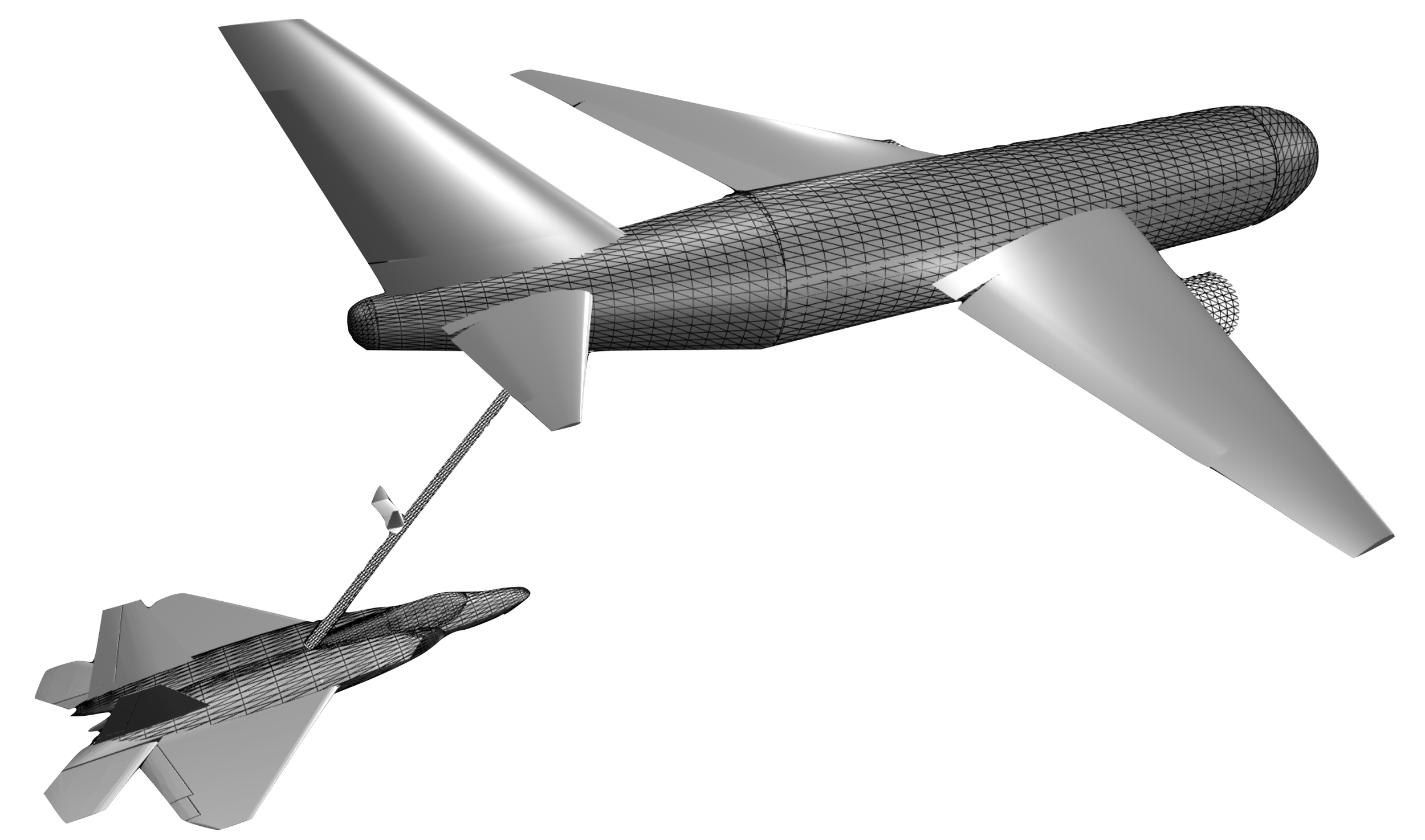Aerodynamic Modeling
NAELL
Numerical AeroElastic Lifting-Line
Aeromodel Generation
NAELL (Numerical AeroElastic Lifting-Line) is an advanced aerodynamic analysis code designed to predict the forces and moments of fixed-wing aircraft with high efficiency and accuracy. Based on a method similar to the numerical lifting-line algorithm developed by Phillips and Snyder, NAELL extends traditional lifting-line capabilities to support complex and dynamic configurations.
The system can model a wide range of aircraft geometries, each with multiple lifting surfaces featuring arbitrary sweep and dihedral angles. It also supports multi-aircraft simulations, allowing each aircraft to fly in unique orientations and angular rates while fully accounting for mutual vortex interactions between all lifting surfaces.
Currently, NAELL performs rigid-body aerodynamic analyses, providing both total aerodynamic loads and distributed loading data across wings and other lifting components. The framework is being further developed to incorporate aeroelastic effects, enabling coupled aerodynamic–structural simulations in future versions.
Key Features
NAELL is designed to deliver fast, flexible, mid-fidelity aerodynamic analysis across a broad range of aircraft configurations. Its architecture emphasizes adaptability, ease of integration, and an optimal balance between accuracy and computational speed, making it a powerful tool for both research applications and practical UAS development.
Supports Arbitrary and Complex Geometries – Analyze aircraft with multiple lifting surfaces, each with unique shapes, sweep, and dihedral.
Custom Control Surface Modeling – Define and evaluate control surfaces of any geometry to study control effectiveness and aerodynamic response.
Linear and Nonlinear Solution Methods – Choose between fast linear approximations or full nonlinear solutions for increased accuracy and fidelity.
Comprehensive Output Data – Obtain dimensional forces, moments, and load distributions across all lifting surfaces.
Aerodynamic Coefficients – Compute standard aerodynamic coefficients for use in simulation, analysis, or control development.
Multi-Aircraft Analysis – Simulate multiple aircraft flying in arbitrary directions and angular rates, including full vortex interactions between all lifting surfaces.
Inviscid and Viscous Load Components – Evaluate both inviscid and viscous contributions to total aerodynamic loads.
Angular Rate Effects – Account for dynamic aerodynamic effects due to angular motion and rotation.
High Performance – Delivers results an order of magnitude faster than many traditional aerodynamic solvers.
Object-Oriented Architecture – Designed for ease of scripting and customization, allowing seamless integration into your workflow or project pipeline.
Rapid Aerodynamic Database Generation – Quickly generate aerodynamic databases with respect to angles of attack, control surface deflections, and angular rates, enabling efficient use in flight dynamics and control simulations.


